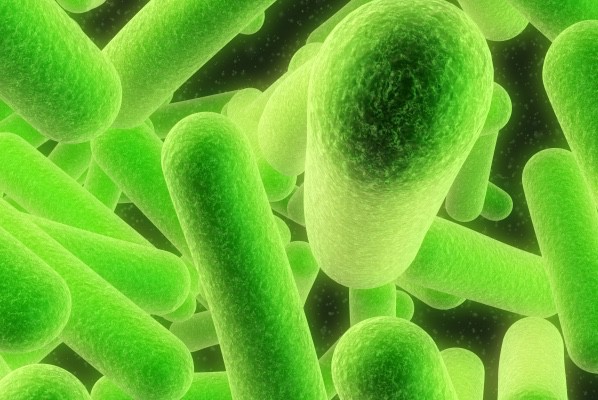11 Bacteria Facts That Would Give You Insight into the Life of These Microorganisms
Do you know bacteria are older than dinosaurs? They are microscopic organisms found in the environment. While some are harmful, others are beneficial for our surroundings.

If you are a science student, then you must be knowing every single thing associated with bacteria- how they are produced, what their classifications are, and more. Bacteria are a type of biological cell and contain a large domain of prokaryotic microorganisms. Bacteria have a range of shapes, including spheres, spirals, and rods.
They were the first life forms to appear on earth and can be found in the majority of habitats. Several bacteria facts are not known to science lovers. For instance, they inhabit soil, radioactive waste, and the biosphere of the earth’s crust. Furthermore, they live in symbiotic relationships with plants and animals.
The majority of animal life is dependent on bacteria for survival because they possess enzymes that are necessary to synthesize vitamins. In humans and animals, several bacteria exist in the gut, and several bacteria can be found on the skin.
While some bacteria are harmful to the body, others can be beneficial in the gut flora. Antibiotics are used to treat bacterial infections and can be important in sewage treatment and the production of cheese and yogurt through fermentation.
Early Evolution of Bacteria

The ancestors of bacteria were single microorganisms and were the first forms of life to appear on earth. For about 3 million years ago, the majority of microorganisms were microscopic and were the dominant forms of life. The evolution of bacteria has progressed over millions of years with the major divergence from eukaryotic lineage.
Bacterial evolution can be considered as the genetic changes that a bacterium accumulates during its lifetime. Because of short duration and large population sizes, bacterias evolve rapidly. Bacterias support plants and animal life and are used in medicinal industries.
Characteristics of Bacteria

Bacteria are regarded as the simplest life forms and make a diverse group of organisms. The diversity of bacteria has divided the group into two domains of life, i.e., Eubacteria and Archaea. Furthermore, bacteria share different characteristics and are most widely known as having prokaryotic cells.
1. Bacteria are single-celled
The majority of bacteria spend their microscopic life cycle as independent cells. Some myxobacteria form multicellular fruiting bodies as a part of their life cycle.
2. Plasma Membrane is not a feature of bacteria
Plasma Membrane is common throughout the living cells. However, this is not a feature of bacteria. The absence of internal organelles in bacteria prevents several functions that occur within eukaryotic cells and on the plasma of bacteria.
3. Peptidoglycan cell wall envelops the bacteria cell
A peptidoglycan cell wall is the most common feature of bacteria. The cell wall provides strength and prevents rupture in a changing environment. The test performed in identifying bacteria is the Grain Stain, which categorizes Eubacteria as Gram-positive and negative based on the cell wall feature to retain crystal violet dye.
4. DNA Sequence is Shorter compared to Eukaryotes

The linear chromosomes are represented graphically in biology textbooks. Conversely, archaeans and eubacteria possess single-circular chromosomes and a DNA sequence shorter than that found in eukaryotes.
The shorter DNA sequence can be explained by the reduced complexity of bacterial cells but also results from the reduced presence of introns. The bacterial genome is augmented by fragments of DNA, called plasmids. These plasmids are replicated within the cell independent of the bacterial chromosome and get exchanged between bacterial organisms.
5. Bacteria Lack a Nucleus Within Cells
Eukaryotic cells in plants and animals possess a membrane-bound nucleus that divides the cell’s DNA from other cells. The functions in these cells are also hidden away into specialized membrane-bound organelles.
Bacteria lack a nucleus and organelles within cells. This doesn't mean that bacteria do not possess internal organization as DNA is often hidden into a region of the bacterial cell known as the nucleoid.
Bacteria Facts That You Probably Not Know
1. Humans are half made up of Bacterial Cells
It is known that there are ten times more bacterial cells than human cells in a person. But several studies doubt the number and reveal that there exist only about 30% more bacterial cells. The bacteria cells are smaller than human cells and would only fill nearly 2L of soda bottles in volume.
2. Bacteria Communicates Through Electrical Signals
As you communicate, bacterias do communicate through electric signals. Billions of cells communicate and work together like a microbial brain. Bacteria also build nanotubes to bridge between cells to exchange small molecules and proteins.
3. Bacteria Can Cause Rain

You might not know about this bacteria fact, but bacteria possess special proteins to form ice. Cell and cell fragments with DNA can be found in the center of snowflakes. Pure water in the atmosphere won’t freeze unless there is particle-like dust in the middle to help particles arrange themselves in the form of crystal.
The particles are known as nucleators, and they form ice at 32 ˚F. Bacteria are effective ice nucleators because of the protein they have. However, only a few species can do it. If this happens in the winter, it snows, and if it rains, then it is summer.
4. Bellybuttons Bacteria have Distinguished Fingerprints
Bellybuttons bacteria have a unique fingerprint. In a project, researchers swabbed over 60 belly buttons and identified the bacteria from them. They identified over 2000 bacterial species, with over 1500 species new to science.
It was found that some bacterias were three times more diverse than other bacteria. However, the average number of different bacteria present in the belly button was around 67.
5. Bacteria are responsible for B.O.
If you think your underarms are smelly, then this is because of bacteria. The human body produces two types of sweats which are salty and apocrine. ABCC11 is the bacteria that is responsible for sweat.
Furthermore, the gene is responsible for wet and dry wax. If you have wet earwax, then your body has protein that transports the sweat from pores and thus attracts bacteria. Whereas, if you have dry earwax, then it doesn't produce protein and doesn't make the apocrine sweat.
6. Bacteria are Classified Based on Shapes

You can find different shapes of bacteria in the environment. The best and the easiest way to find them is through their shape. Spherical-shaped bacteria like a ball are called cocci.
Rod-shaped bacteria are known as bacilli and are sometimes called vibrio. Spiral-shaped bacteria are referred to as spirilla. If their coil is tight, then bacteria are termed as spirochetes.
7. Bacteria are Older than Dinosaurs
You won’t believe that bacteria have been on the planet for over 4 billion years. Thus, they are the oldest known life-form on earth. Bacteria have been present since early Precambrian time.
Thus bacteria had time to adapt to environments and have given rise to several descendant forms. Organisms must adapt to changing environments, and it is clear that mutations, which are changes in the sequence of nucleotides in an organism’s DNA, constantly occur in different organisms.
8. You Eat Bacteria in Many Food
Do you know yogurt that you eat for breakfast is prepared with bacteria? Foods like cheese and miso are made with bacteria.
9. Bacteria was Discovered in 1674 by Antonie Van Leeuwenhoek

Once when a Dutch scientist Antonie van Leeuwenhoek when he was looking at scrapings from the human mouth under a new microscope.
10. They Adapt Fast
According to a study, bacteria adapt quickly, making it difficult to find an antibiotic to work consistently. It is believed that if you take antibiotics frequently, then they become resistant. Therefore, people taking antibiotics should undergo household testing to make sure that there are no harmful bacteria present in their bodies.
11. Bacteria are tough, sometimes bad, ugly, and good

Several bacteria survive in different conditions. Right from ice to springs and in radioactive, bacteria can live in bad conditions. While some bacteria are good, others are bad. For instance, the oxygen you breathe is created with bacteria.
Final Words
Science is a vast topic. It involves subjects ranging from geology to linguistics and astronomy to ecology. Also, it gives scientists several new topics to research about the environment and the impact of other objects on human lives.
Do you know other bacteria facts that are not mentioned in science books? If yes, then share them.
Popular Posts
10 Biggest Water Dinosaurs & Sea Monsters Ever Found in Archaeology
The present-day ocean is certainly a scary place where giant sharks, whales, squids, barracuda, and numerous other marine creatures live.
Kimberly Campbell
6 Amazing Things We Should Learn From Camel Feet
Camels are a kind of mammals with the humped back, long legs, and lipped snout. They were domesticated nearly 3000 years ago are still used for transportation.
Kimberly Campbell
80 Most Popular Long Neck Dinosaurs Ever Recorded in History
Do you know the largest creatures ever walk on the earth were the long tailed and long neck dinosaurs which were called as Sauropods?
Kevin Green








